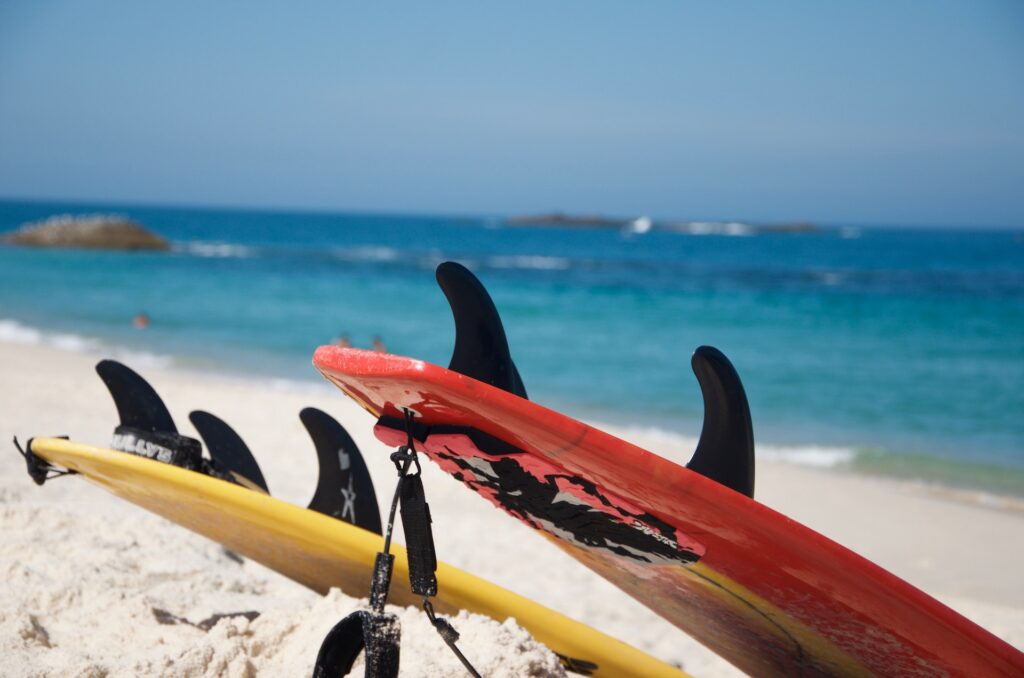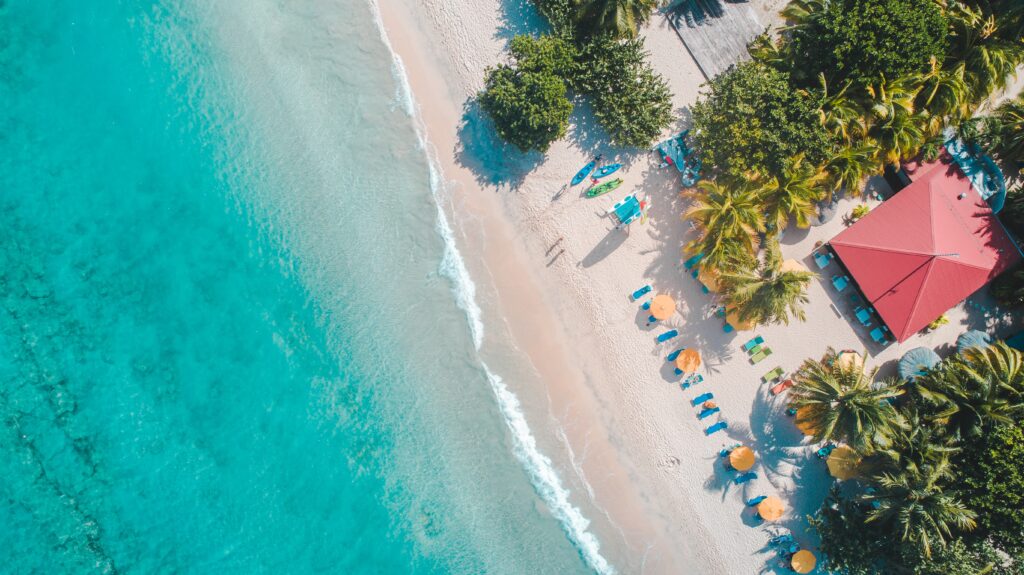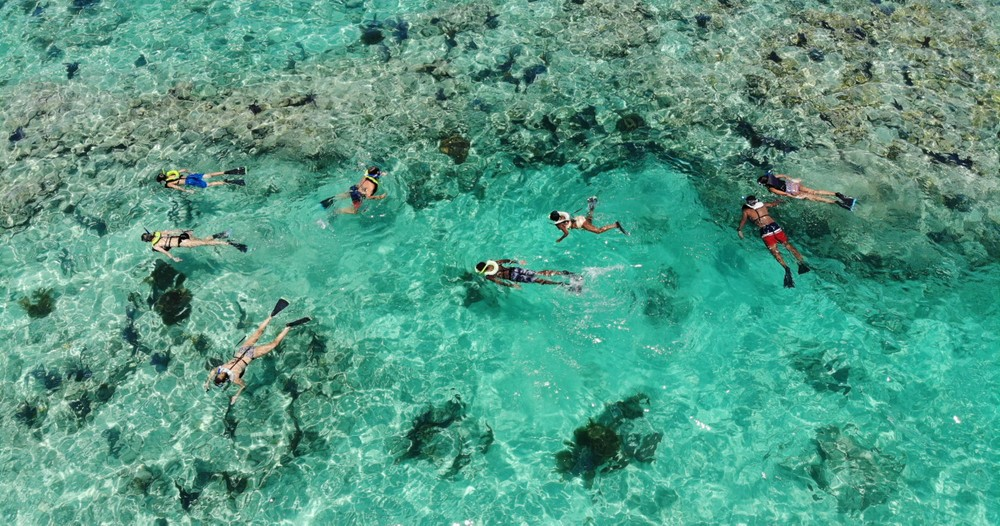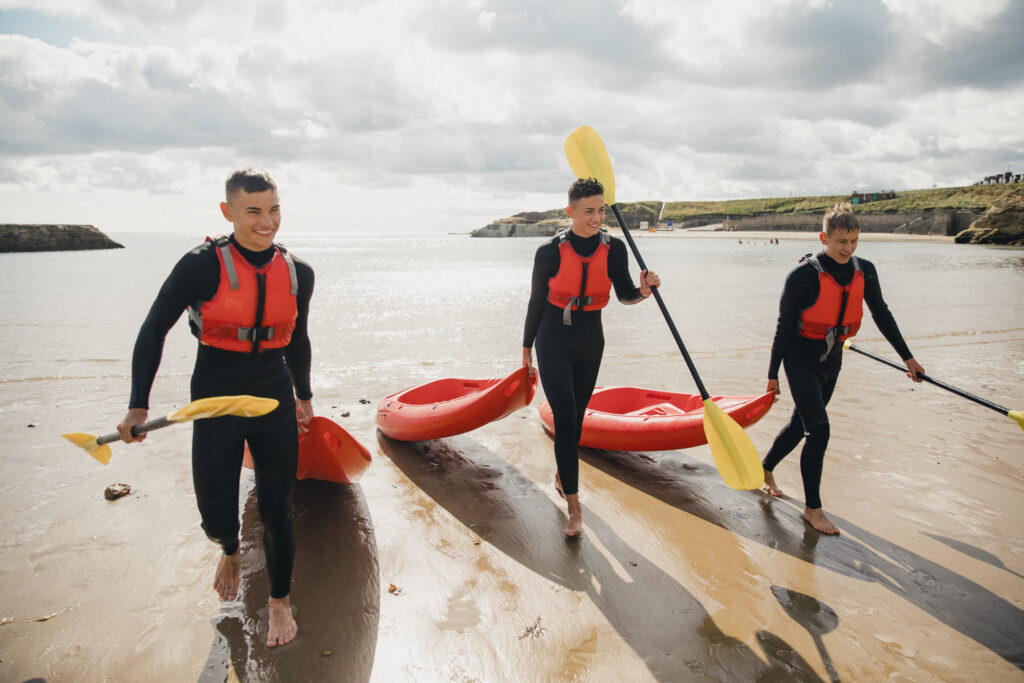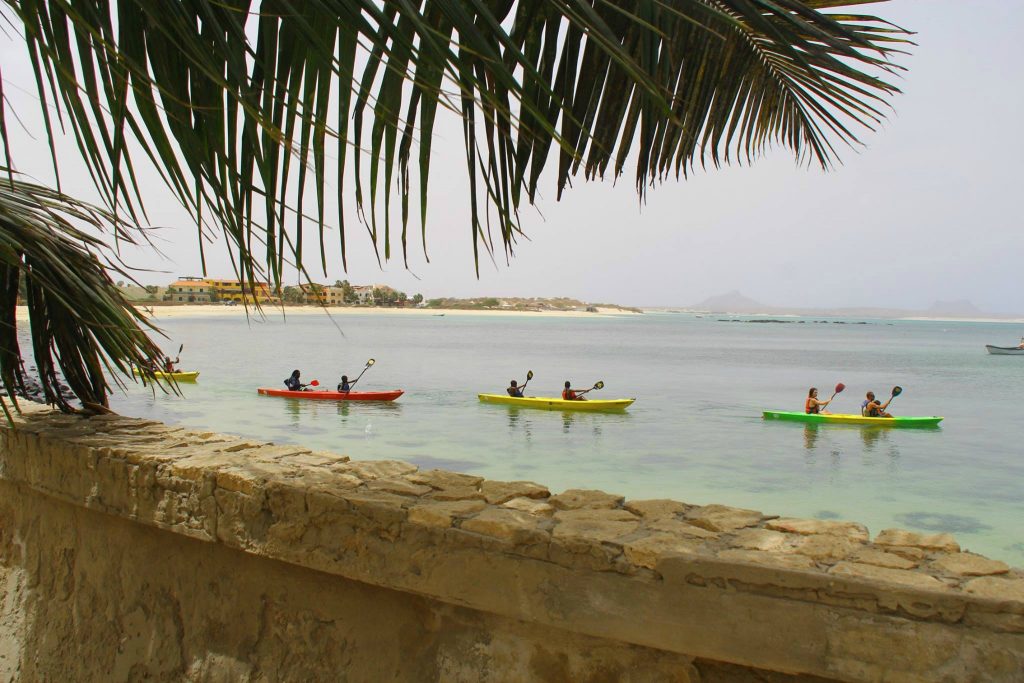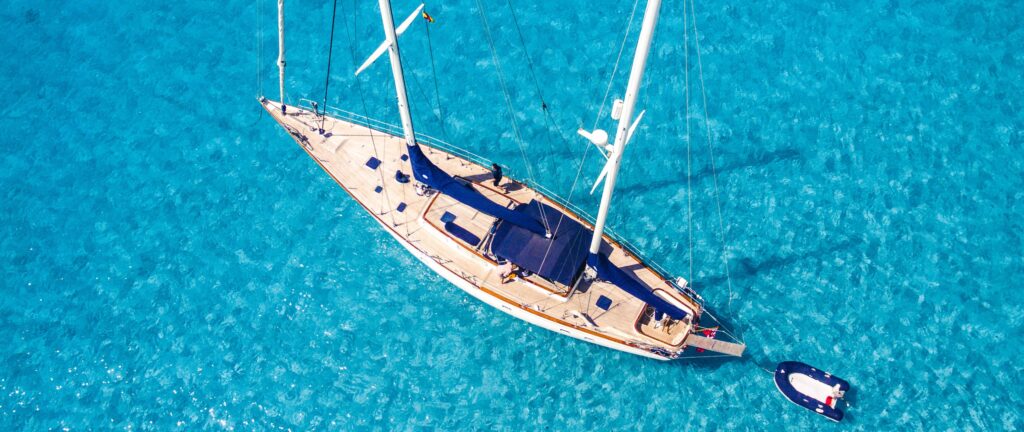Surfing is a thrilling and rewarding sport. It requires skill, practice, and the right gear. As a beginner, exploring a wide range of surfing gear essentials and figuring out what you need can be overwhelming.
In this beginner’s guide to surfing gear essentials, we’ll look at the six items every beginner surfer needs, and we’ll talk about each one and how to find the most suitable ones for you.
Whether you’re just a newbie surfer or simply looking for some recommendations to upgrade your gear, this guide will help so you can maximize your surfing experience. Let’s dive in!
Surfboard
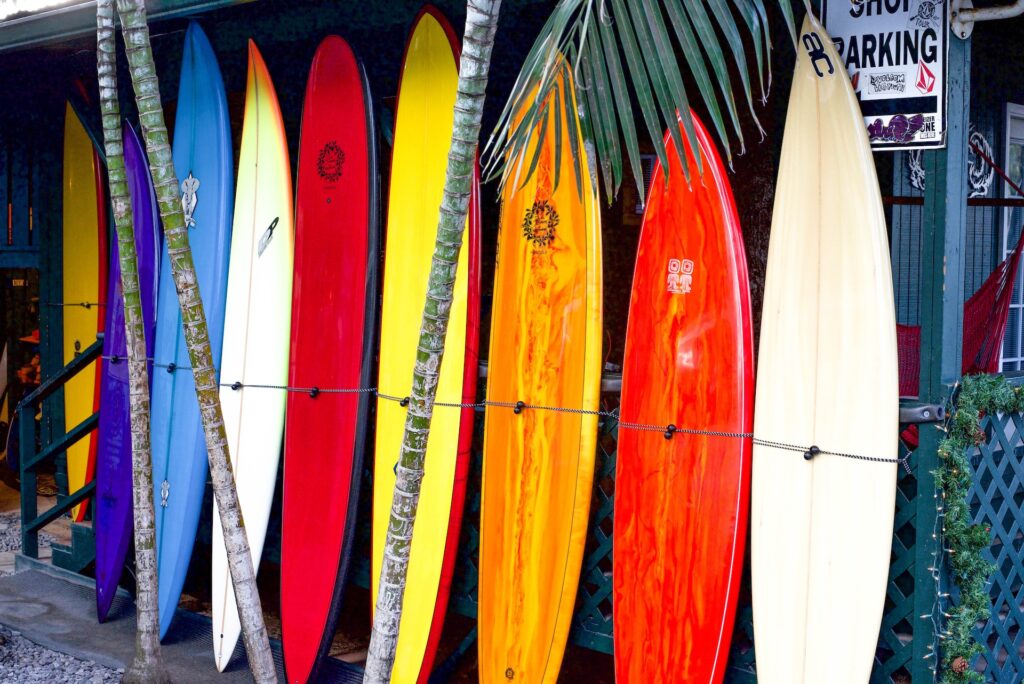
Of course, the surfboard is the most crucial piece of surfing gear. Choosing the right surfboard that matches your skill level and the type of waves you’ll be riding matters greatly.
Let’s help you find the right surfboard for you:
- Consider your skill level – For beginners, it is best to start with a longer, wider board because it provides more stability and buoyancy. As your skill progresses, you can change into smaller, more maneuverable boards.
- Think about the waves – The type of waves you want to ride is also significant in choosing the right surfboard. A longboard or funboard is recommended for surfing small, slow waves. A shorter board with a narrower tail may be more appropriate for larger, faster waves.
- Try before you buy – Renting or borrowing a surfboard to try different sizes and shapes is a good idea. Doing so gives you a better idea of what works for you and what you’re comfortable with.
- Ask for advice – Don’t be afraid to ask for advice from experienced surfers or surf shop staff members. They can share valuable insights and recommendations based on your skill level, style, and preferences.
Leash
A leash connects your ankle to the surfboard and is essential for your safety. Wearing it ensures you don’t get separated from your board if you wipe out or get caught in a strong current.
Here’a how you pick the right one:
- Length and thickness – The length and thickness of the leash depend on the size and weight of your board and the conditions you’ll be surfing in. You should get a thicker leash for larger waves and stronger currents, while a thinner leash may be appropriate for smaller waves.
- Quality and strength – Choose a durable and strong leash. Check the quality of the materials and construction, and do not use worn or damaged leashes.
- Secure attachment – Always ensure the leash attaches to your ankle and board. Test the attachment before entering the water and make sure it’s tight and won’t come loose during your session.
Wetsuit
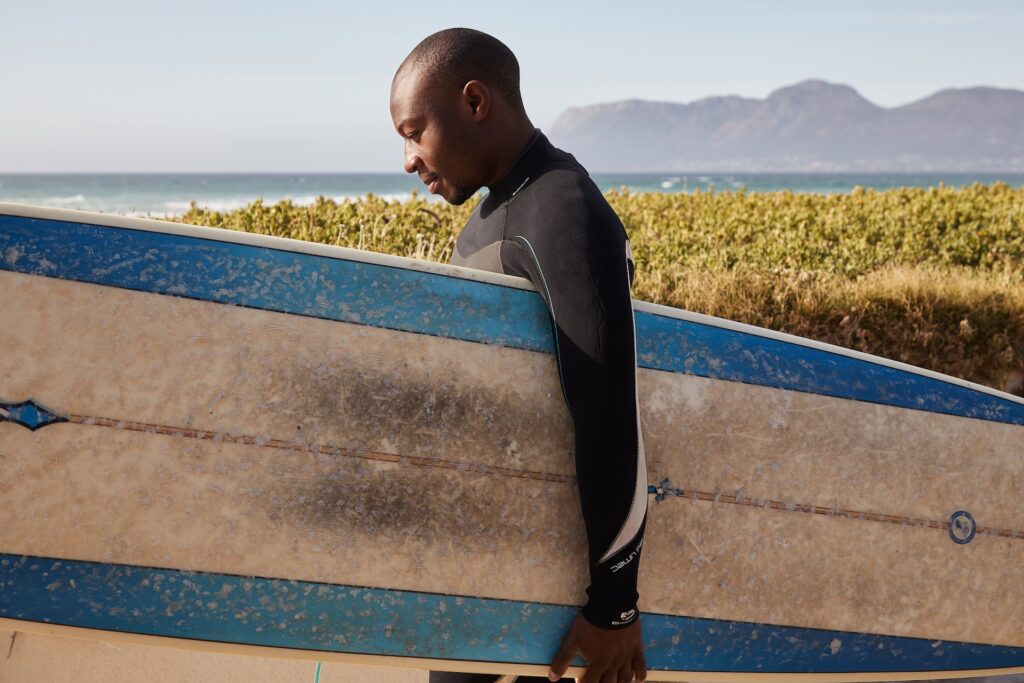
A wetsuit is a must-have to keep you warm and comfortable in the water, especially in colder climates. The following are some essential things to keep in mind when shopping for a wetsuit:
- Fit and comfort – The wetsuit should fit snugly but allow for freedom of movement. A tight wetsuit can restrict movement and be uncomfortable, while a loose wetsuit may let water in and reduce warmth.
- Thickness – This depends on the water temperature and conditions. Thicker wetsuits are recommended for colder water and stronger winds, while thinner wetsuits are appropriate for warmer water and milder conditions.
- Material – Wetsuits are made from different materials, such as neoprene or rubber, which can affect their warmth, flexibility, and durability. Choose a material that suits your needs and preferences. Also, consider the quality and brand reputation.
- Try before you buy – Again, it’s essential to try on different wetsuits before purchasing to find the right fit and comfort level. There are also wetsuits for rent with different brands and styles that you can try on to see which suits you best.
Fins
Fins provide stability, control, and maneuverability. Choosing the right fins matters significantly in your surfing performance and experience.
Here’s how you choose your fins:
- Size and shape – Larger fins provide more stability and control, while smaller fins allow more maneuverability and speed. Different fin shapes, such as the rake or sweep angle, can also affect performance.
- Material – Fins are made from plastic, fiberglass, or carbon fiber, which can affect their flexibility, strength, and weight. Choose a material that suits your needs and budget.
- Experiment – Feel free to experiment with different fins to find the right combination for your style and preferences. You can try different sizes, shapes, and materials to see what works best.
Surfing Accessories
In addition to the essential surfing gear, some accessories can enhance your experience and performance on the waves.
Here are some popular surfing accessories to consider:
- Surfboard bag – protects your board during transport and storage, preventing scratches, dings, and sun damage.
- Sonnenschutzmittel – shields your skin from UV rays and prevents sunburns and skin damage.
- Surf hat – provides shade and protection from the sun, reducing the risk of heat stroke and skin cancer.
- Surf watch – tracks tide and wave conditions and helps you time your sessions for optimal surfing.
- Surfing earplugs – protect your ears from cold water and surf-related infections, reducing the risk of ear pain and hearing loss.
- Surfboard rack – securely holds your board on your vehicle during transport, allowing you to travel to different surf spots easily.
With the plethora of surfing gear and accessories options, finding the one that best suits you can be daunting. But if you’re looking for high-quality ones, check out WINDANCE Boardshop. They offer a wide range of surfboards, wetsuits, fins, leashes, and other accessories from top brands like O’Neill, Rip Curl, and FCS.
Schlussfolgerung
Surfing gear essentials are crucial for anyone wanting to start surfing. Choosing the right gear will help you improve your stability, control, and comfort on the waves. However, it’s also important to remember that surfing etiquette plays a significant role in keeping the surfing experience enjoyable for everyone.
